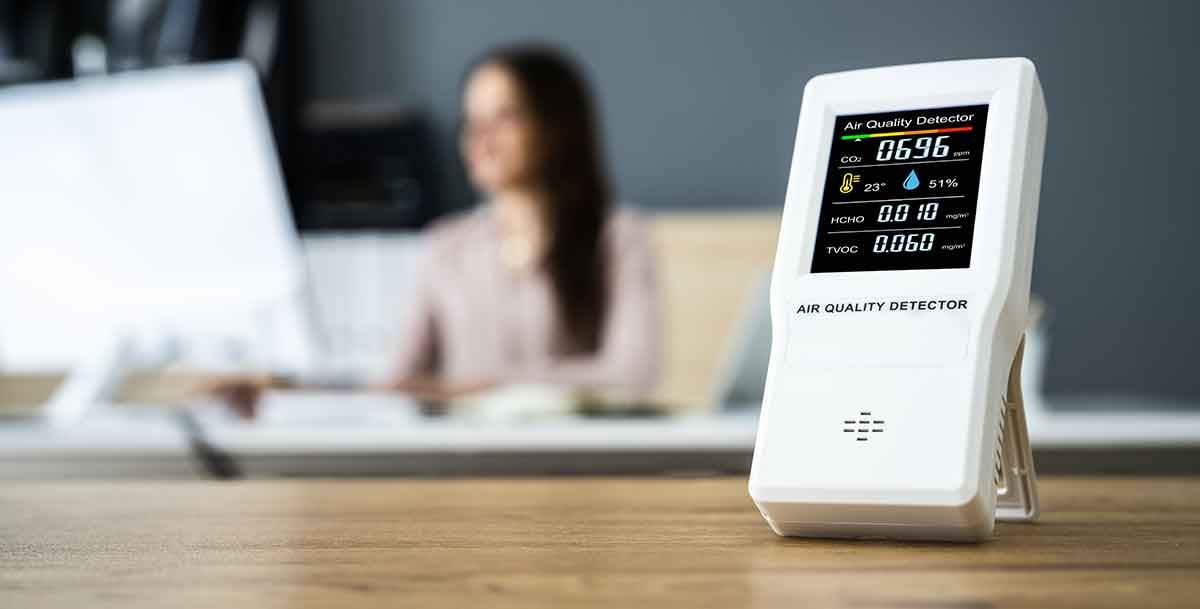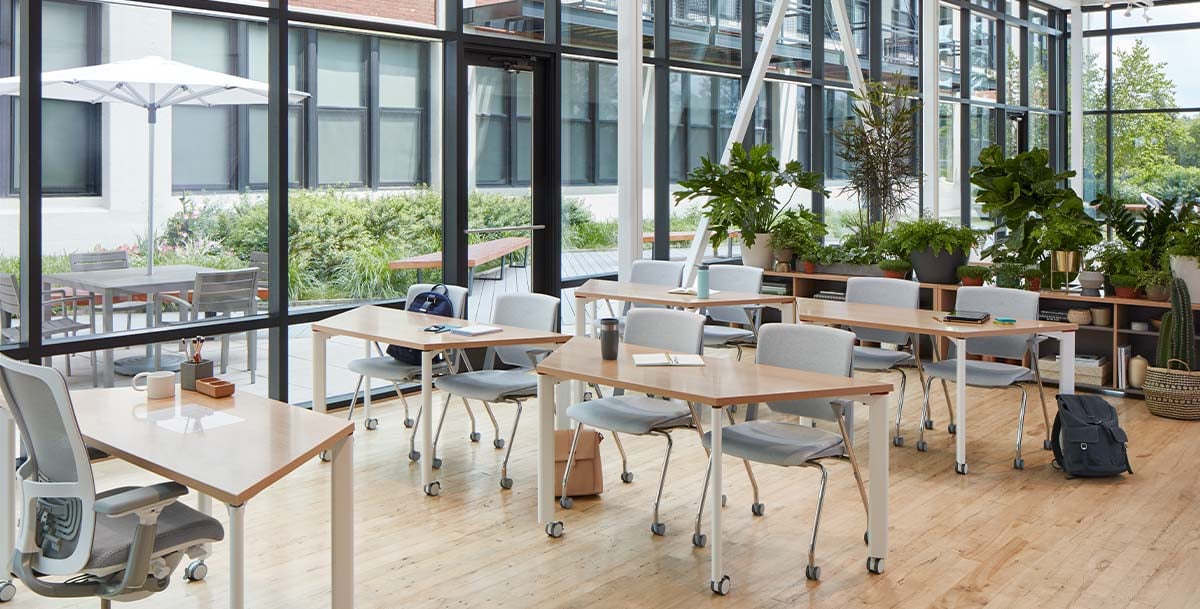
Designing a future-ready workplace entails more than preparing staff and leadership for hybrid work. It encompasses creating healthy spaces in which each of us can reach our full potential, both in terms of health and wellness and workplace productivity.
As more and more companies adopt a people-centric approach to office design, they are focusing their efforts on improving indoor air quality. This is especially true in fire-prone California and other western states, where outdoor air quality can be severely affected during fire season.
Better indoor air quality can also lead to higher levels of workplace satisfaction, allowing workers to feel more energized throughout the day, and contributing to a greater sense of well-being.
Benefits of improving indoor air quality
Access to healthy indoor air is something everyone deserves. The growing body of research indicates that good indoor air quality can spur higher productivity. Essentially, IAQ can negate the impacts of poor, polluted air which can take a toll on our physical and mental health. Better indoor air quality can also lead to higher levels of workplace satisfaction, allowing workers to feel more energized throughout the day, and contributing to a greater sense of well-being.
Furthermore, having access to clean air can create a sanctuary — a space to rejuvenate. This is especially true in the hospitality industry. Business travelers and vacationers alike seek places for rest and relaxation. Spaces where they can breathe easy after a day of working or sightseeing. While spa and exercise amenities can alleviate daily stresses, clean air provides ongoing relief that positively impacts our performance.
More importantly, improved indoor air quality can help protect against airborne diseases, such as COVID. Earlier this year, the Environmental Protection Agency issued the Clean Air in Buildings Challenge encouraging employers and building owners to improve indoor air quality in an effort to reduce risks from airborne viruses and indoor contaminants. Taking a cue from the healthcare industry which pivoted its building operations to balance contagion, comfort, and connection, future-ready workplaces need to adopt healthier indoor air quality measures to fight against these unforeseen illnesses.

Causes of poor indoor air quality
There are many factors that contribute to poor indoor air quality. According to Scientific American, as buildings have become more energy-efficient, the building envelope has become tighter, affording less air exchange with the natural, outdoor environment. By making buildings air-tight, indoor spaces are unwittingly being optimized for allergens and dust. Moreover, the lack of natural ventilation creates stale, stagnant air, hindering good airflow.
Toxins, off-gassing, and chemicals also contribute to poor air quality. While many of these indoor pollutants are invisible, they wreak havoc on our physical and emotional health.
And when the air quality outside is bad, our indoor spaces are negatively impacted. Densely populated cities, buildings sited in land-locked regions, or areas exposed to disasters such as fires or gas leaks, are at higher risk of poor indoor air quality.
Solutions for improving indoor air quality
The Clean Air in Buildings Challenge highlights a range of recommendations and resources available for improving indoor air quality and ventilation, which have been echoed by many industry experts and AEC practitioners. Based on our conversations in the field and ongoing research, we’ve identified four key steps employers can implement to future-ready their workplaces for improved indoor air quality.
- Improving ventilation — Good circulation is key to indoor air quality. When weather conditions permit, open windows and doors to increase outdoor airflow. Even slightly opened windows can introduce beneficial outdoor air. In addition to circulating fresh air, proper ventilation can control indoor humidity and airborne contaminants, creating healthier workplaces.
- Biophilia — Further connect employees to the outdoors by implementing biophilic design elements such as adding greenery or water features, making better use of sunlight, or maximizing natural ventilation. Weaving in natural elements not only helps with IAQ, it can also improve an employee’s sense of well-being.
- HEPA filtration and high-efficiency HVAC — Air filtration systems are critical in improving indoor air quality and creating safer workplaces, especially in larger office buildings. If you are unable to upgrade your HVAC, consider adding stand-alone filtration units such as portable HEPA filters to high-traffic areas including lobbies and conference rooms. The EPA states that HEPA (high-efficiency particulate air) filters can theoretically remove at least 99.97% of dust, pollen, mold, bacteria, and certain airborne particles. To ensure your filters are working optimally, put a filter replacement program in place and schedule regular maintenance for your HVAC system.
- Air tests and monitoring — There are two ways to measure indoor air quality: air quality testing and continuous monitoring. Testing measures the air for allergens and mold, among others, and can show whether the quality of your indoor air is safe or dangerous, or meets building codes. If you’re looking for ongoing analysis, consider an air monitoring system with built-in sensors. By collecting ongoing data, employers and facility managers can gain real-time stats on the current state of their workplace’s air quality.
We understand the importance of healthy workplaces. Employees expect safe indoor environments. Like clean water, clean air is a basic need - a necessity to perform our best. By creating office spaces designed to improve indoor air quality, installing efficient ventilation systems, adding operable windows, and sourcing low-and-no-VOC materials and products, together we can create healthy buildings.
We are fortunate to work with companies who are dedicated to IAQ. As a company, we strive to provide safer, healthier office furniture and workplace systems. As part of our sustainability initiative, we work with manufacturers who source healthy materials and use LEED guidelines when designing our own furniture. By adopting healthy material selection criteria, we help our partners reach their healthy office goals while reducing energy use and raising productivity.
Like what you see? Contact us to schedule some time to discuss making your workspace future-ready.







